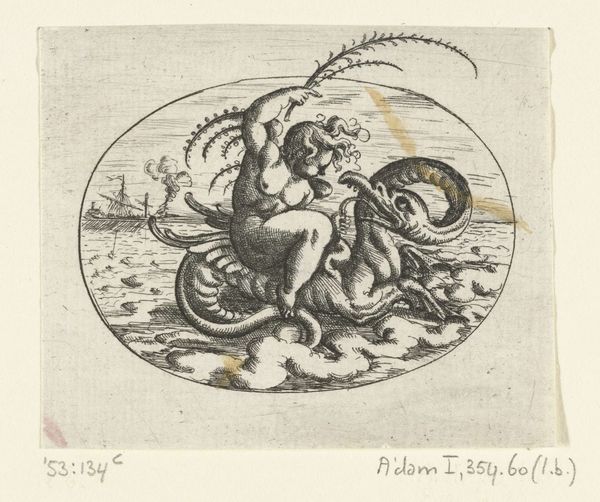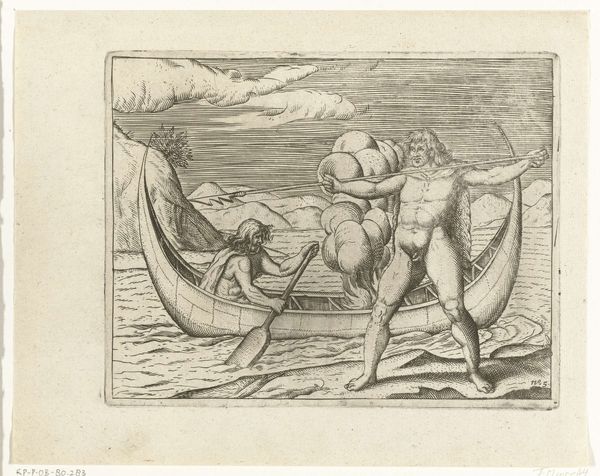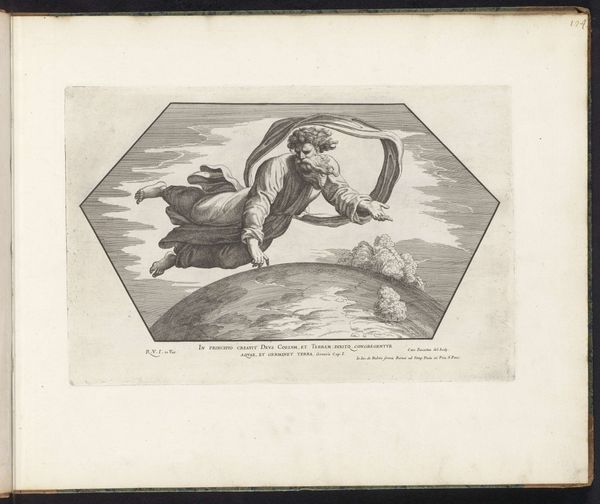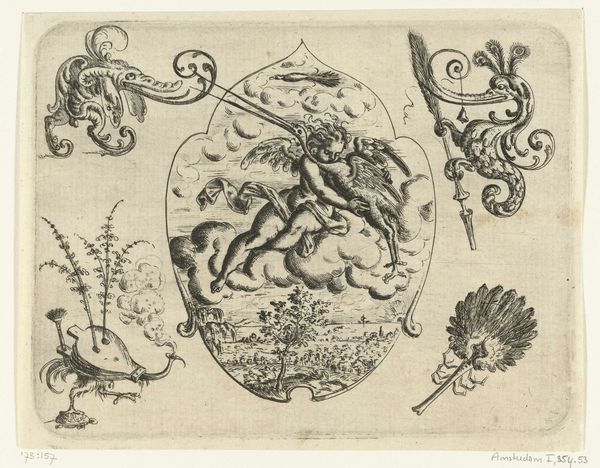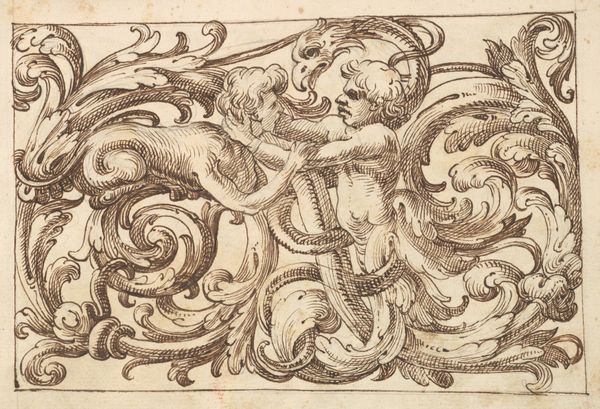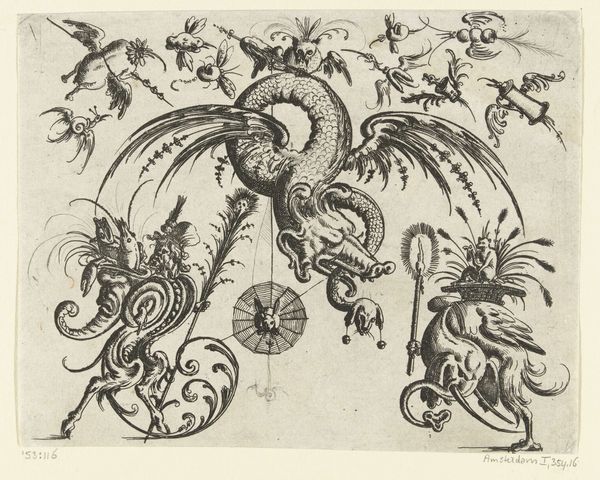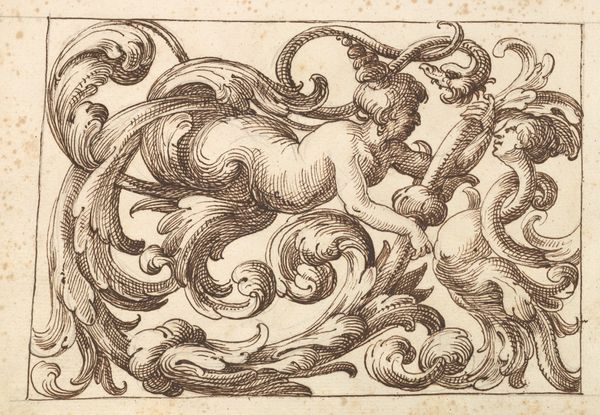
print, engraving
#
allegory
# print
#
mannerism
#
figuration
#
engraving
Dimensions: height 71 mm, width 82 mm
Copyright: Rijks Museum: Open Domain
Editor: We're looking at "Liggend ovaal met putto," an engraving by Christoph Jamnitzer, made sometime between 1573 and 1610. There's something unsettling about the winged cherub wrestling this snake, almost like a power struggle playing out in this strange seascape. What strikes you when you look at this print? Curator: Immediately, I see a complex allegory rooted in Mannerist ideals. The putto, a symbol often associated with innocence and love, is here actively engaged in a struggle. We have to ask, what does the snake represent within the historical and social context of the late 16th century? Editor: Good question! Snakes are often symbols of evil or temptation, right? Curator: Exactly. This is about the tension between innocence and corruption, explored through the lens of religious and moral anxieties of the time. Look at the putto's determined grip; Jamnitzer is representing an active resistance to darker forces. Consider the philosophical debates of the era, about free will, moral responsibility, and the battle between good and evil. The winged cherub may be linked to ideals of the Renaissance era such as neo-Platonism, while still being grounded in earthly concerns. How does the imagery engage with contemporary power struggles? Editor: So it’s not just a cute cherub, it’s about much more... That context really shifts my perception. I hadn't thought about it as social commentary. Curator: Precisely. Engaging with art like this requires that we pull it into dialogue with broader cultural narratives and question assumptions about what it might signify within specific power dynamics and how it continues to resonate today. Editor: That makes the piece so much richer. I'll definitely be more mindful of historical contexts when viewing art from now on. Curator: And remember, every artistic choice, like Jamnitzer’s use of engraving, plays into these meanings. Let’s keep challenging those historical perspectives.
Comments
No comments
Be the first to comment and join the conversation on the ultimate creative platform.

